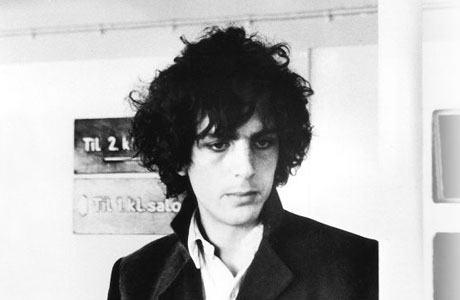Syd Barrett, originally known as Roger Barrett, was born in a middle-class family in Cambridge on January 1946. Being an acknowledged English singer, song writer, artist as well as a guitarist, Syd was a versatile musician, who performed several acts at the same time. Syd has been able to make an enduring place in the hearts of music lovers for his role as the founder member of the British rock group Pink Floyd, which is said to be a subculture of psychedelic drugs.
Early Days
Since his young days, both his father Max Barrett, a well-known pathologist of the area, and his mother Winifred encouraged Roger in his musical endeavors. At a tender age of 14, his remarkable performance as a musician earned Roger the nickname ‘Sid’ or ‘Sid Barrett’ that referred to a previous popular jazz drummer from the Cambridge locality. Roger, however, changed the spelling of his name to Syd Barrett to maintain his individual identity.

During the Pink Floyd’s formative days, Syd was responsible for making available the entire key melodic as well as stylistic trend and brilliance to the group’s initial compositions. Syd remained with Pink Floyd only for a brief period from 1964 to 1968 and suddenly quit the group giving rise to gossips that he was weary of mental illness owing to his addiction to drugs.
Pink Floyd Days
During Syd Barrett’s association with Pink Floyd, the group experienced numerous name changes that included ‘The Abdabs’, ‘The Screaming Abdabs’, ‘Sigma 6’ and even ‘The Meggadeaths’. Syd joined the group when it was called ‘The Tea Set’, but was soon dismayed to find that there was another rock group by that name. This made Syd Barrett come up with a new name ‘The Pink Floyd Sound’ and later changed it to ‘Pink Floyd’ by combining the first names of Pink Anderson and Floyd Council – two prominent blues singers.
During the initial days, the Pink Floyd, much like its contemporary The Rolling Stones, The Kinks and ‘The Yardbirds’, played the title adaptations of American R&B songs, but by 1966 it developed its exclusive style blending improvised jazz with British pop-rock. Soon Pink Floyd became a popular name and occupied much of the performances at the UFO; a new rock concert venue in London that developed into a sanctuary for the British psychedelic music. Adding to its gains, by the end of 1966, Pink Floyd obtained the valuable services of two dependable managers – Peter Jenner and Andrew King.
Health
Syd Barrett suffered from various psychological problems. One was schizophrenia. Also, a manic depression or bipolar disorder was diagnosed.
His psychological illness was due to his use of psychedelic drugs, most notably the LSD. Gilmour stated in an article that, “In my opinion, his breakdown would have happened anyway. It was a deep-rooted thing.” Gilmour also added, “But I'll say the psychedelic experience might well have acted as a catalyst. Still, I just don't think he could deal with the vision of success and all the things that went with it."

Last Days
Unfortunately, Syd Barrett’s life as an active rock musician was very brief and lasted for barely seven years. During his association with Pink Floyd, Barrett recorded two group and solo albums. Though it is believed that his life as an active musician was cut short owing to his addiction to drugs, even after Syd Barrett withdrew from public life, there have been numerous appreciations, especially his former band Pink Floyd’s tribute to him in its 1975 album ‘Wish You Were Here’. Syd Barrett’s self-imposed seclusion lasted for over 30 years and came to an end with his death in 2006.
